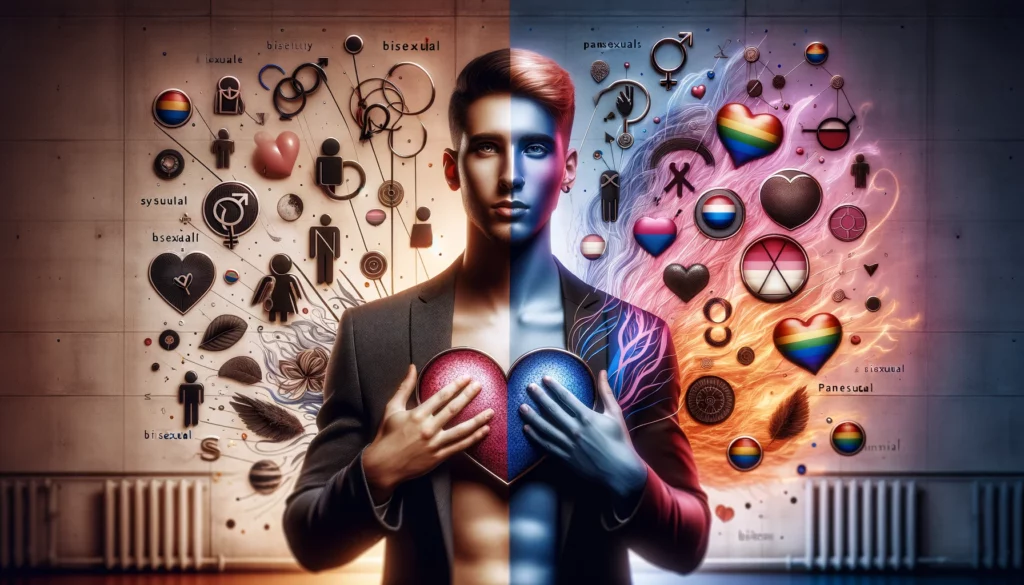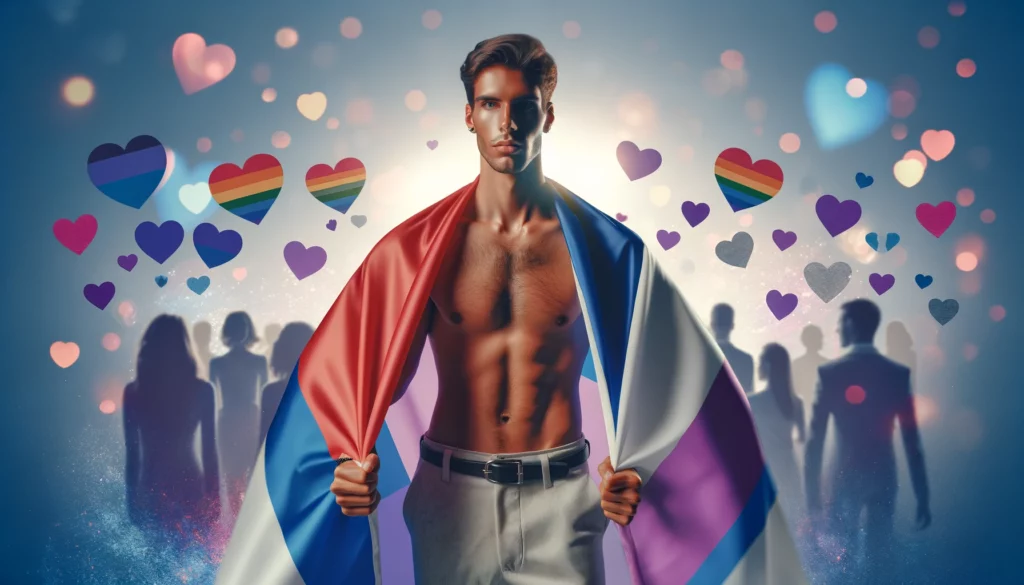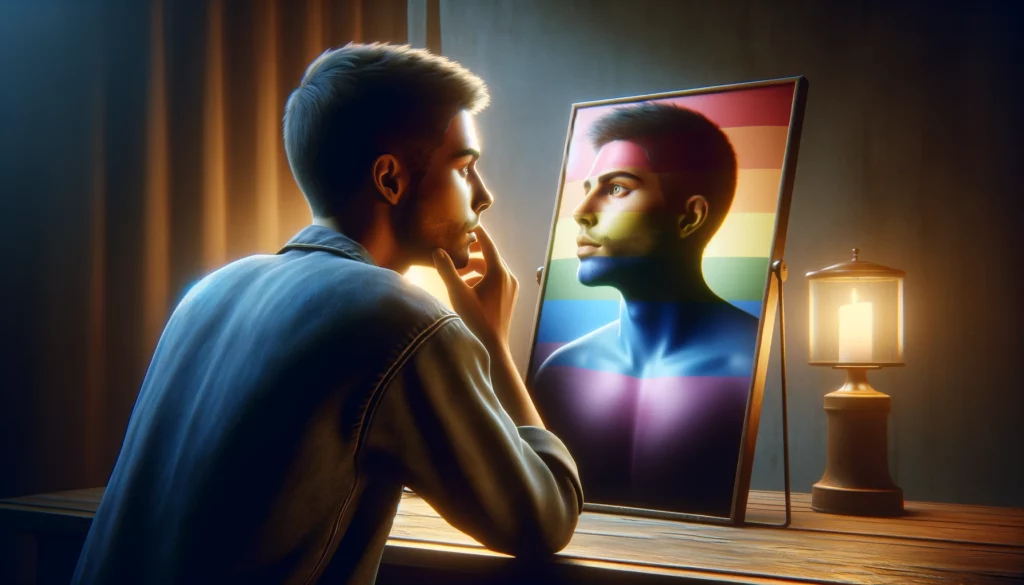Table of Contents

Introduction to How do bisexuals and pansexuals differ?
Many use the terms bisexual and pansexual interchangeably. While overlapping, distinctions exist between these two sexual identities. Understanding the nuances enables individuals to find the label that best affirms them.
Defining bisexual
Bisexuality refers to having the capacity for emotional, physical and sexual attraction towards more than one gender. Some key aspects:
- The “bi” prefix reflects attraction to one’s gender and other genders.
- Bisexuality is an umbrella term encompassing various identities, including pansexuality.
- Bisexual attraction may or may not factor gender heavily into attraction varies individually.
Defining pansexual
Pansexuality refers to experiencing attraction regardless of gender. Key facets:
- Pansexuals consider a person’s essence and personality more than gender identity.
- Pansexuality explicitly affirms attraction inclusive of all genders – both within and outside the gender binary.
- For some pansexual individuals, gender plays little to no role in sparking attraction.
Similarities between bisexual and pansexual
Bisexuality and pansexuality share meaningful common ground:
- Both encompass the potential to be attracted to multiple genders or experience gender-blind attraction.
- Both reject binaries. Neither limits attraction solely to men and women.
- Both highlight the multidimensionality of human attraction beyond gender.
- Both are marginalised identities that confront societal biphobia/panphobia.
Distinctions between bisexual and pansexual
However, some core distinctions include:
Attraction emphasis
- Bisexuality involves the capacity for multi-gender attraction but is not necessarily blind to gender.
- Pansexuality emphasises attraction explicitly regardless of gender. Gender is a minimal factor.
Inclusion of trans/non-binary identities
- Bisexuality has a history of affirming attraction to trans and non-binary people.
- Pansexuality stresses explicitly the inclusion of attraction to all gender identities.
Gender as a factor in attraction
- Bisexuality leaves room for gender to play a part in attraction.
- Pansexuality minimises gender as a factor in experiencing attraction.
Identities have overlap
It’s most accurate to characterise bisexuality and pansexuality as identities with significant overlap and more similarities than differences.
Some people feel both terms resonate and use them interchangeably. Others distinguish pansexuality as most accurately depicting their experience. Both are valid, affirming choices.
Choosing language
Factors guiding bisexual vs. pansexual identity include:
- Degree gender factors into attraction
- Extent attraction hinges on perceiving traditionally gendered features
- Whether gender diversity and inclusion are core to your identity
- Level of clarity around exactly how gender plays a role in your attraction
- How well each term resonates with your lived experiences
Evolving language
Using pansexual emerged pretty recently in the early 21st century, mainly from internet communities.
Reasons many adopt pansexual identity include:
- The perception that bisexuality only affirms binary genders
- Desire to explicitly have an attraction to trans/non-binary people
- Emphasise gender blindness in experiencing attraction
However, the bisexual community has always encompassed diverse genders. Many proudly identify as just bisexual today.
Fluidity between identities
Some people feel aligned with both bisexual and pansexual identities or fluctuate between identifying with each as self-understanding evolves.
Both pansexuality and bisexuality describe multifaceted, non-binary experiences of attraction not limited by societal boxes.
Using either term affirms your complex attractions as beautifully human.
Diversity of experience
Individual bisexual and pansexual experiences vary greatly. Avoid assumptions:
Bisexual people
- Can be attracted to all genders, not just men and women
- Don’t necessarily experience gender as a critical factor shaping attraction
- Include those with very fluid concepts of gender
Pansexual people
- Don’t necessarily experience zero gender preference
- Can recognise someone’s gender, attracted regardless of it
- Can have unequal gender attraction ratios
Myths that cause division
Harmful misconceptions fuel division between these overlapping identities:
Myth: Bisexuality excludes non-binary attraction
Reality: Bisexuality has always encompassed attraction to trans and non-binary people.
Myth: Pansexuality is “more inclusive” than bisexuality
Reality: Both equally affirm the spectrum of gender. Neither is more politically correct.
Myth: Bisexual people strongly factor gender, while pansexuals don’t
Reality: The extent to which gender influences attraction varies greatly among both groups.
Cultivating unity
While nuances exist, bisexual and pansexual communities have much to gain through respect and collaboration:
- Share wisdom and resources to support questioning individuals
- Develop empathy for subtle distinctions in lived experiences
- Amplify shared goals of visibility, equality and acceptance
- Develop affirming language around fluidity between identities
- Clarify misconceptions that create conflict
- Recognise all who claim space under these umbrellas as equally valid
Focus on resonating personally.
Focus less on precise definitions. Instead:
- Explore which term best describes your personal experiences.
- Embrace the complexities of your attraction without pressure to conform to assumptions.
- Know that you get to define your identity based on what makes you feel seen.
- Allow yourself flexibility as self-understanding evolves.
In summary:
While nuanced distinctions exist between bisexuality and pansexuality, both represent valid identities centred on inclusive, gender-expansive attraction spectrums. Those questions can explore the unique resonance of each term. Mutual understanding will allow these overlapping communities to stand in solidarity, leaving rigid assumptions behind. You get to determine which term best affirms your authentic self.
Explore More on BisexualMen.uk

For those who wish to delve deeper into the world of bisexual and bicurious men in the UK, BisexualMen.uk offers a comprehensive and welcoming online portal. This platform provides more than just information; it’s a gateway to vibrant communities, unique experiences, and safe spaces for exploration and connection. Discover a variety of established businesses and events tailored for bisexual men, from luxurious saunas to intimate cinema clubs. Embrace your journey of self-discovery and community connection by visiting BisexualMen.uk.
How do bisexuals and pansexuals differ? FAQ
Do all pansexual people not factor gender into attraction?
No. While many pansexuals feel highly gender-blind in attractions, others do recognise and consider gender but are open to all genders. There is diversity.
Can someone identify as both bisexual and pansexual?
Absolutely. Those who feel affinity with both terms often use them interchangeably or fluctuate between them. Dual identification is valid.
Is one identity more politically correct than the other?
No. Bisexuality and pansexuality are equally inclusive identities. Neither is inherently more progressive or superior.
Are pansexual people automatically non-binary attracted?
Not necessarily. While pansexuality explicitly includes non-binary attraction, individual experiences vary. Some pansexual folks feel more drawn to traditional binaries.
Do bisexual communities exclude or marginalise pansexual people?
Unfortunately, some bi-erasure occurs. But education around overlap is improving cooperation, and most bisexual spaces aim to include pansexual people.



